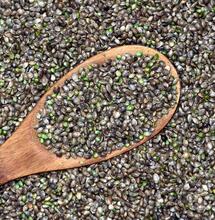Synthetic Cannabinoids

While synthetic cannabinoids are not dangerous, the herbal concoction known as 'spice' or 'bath salts' may be - so what is really in there?
While synthetic cannabinoids are not dangerous, the herbal concoction known as 'spice' or 'bath salts' may be - so what is really in there?
|
Various spice brands that are frequently seized by the authorities |
Synthetic cannabinoids, a.k.a. bath salts or 'Franken-Cannabis', have been on the market since the 1980s. These substances were invented to fill the gap in the marketplace for people who wanted a change in consciousness but did not want to break the laws of man; most users of these drugs liken their effect to Cannabis. Synthetic cannabinoid use peaked in the early twenty-first century. Recent surveys suggest synthetic cannabinoid use via herbal smoking mixtures is on the decline - a common delivery method is to dissolve the synthetics in liquid and spray them onto exotic herbal mixtures. Leonotis leonurus, Leonurus sibiricus, Canavalia maritima and Zornia latifolia are examples of the herbs used in these products.
The herbal mixtures are sold as incense or room deodorizer and have notices on their packages that claim they are not for human consumption and have not been tested for safety. Sold both on the Internet (such as Chill-Out and Snok) and in brick-and-mortar shops, popular brands of 'spice' smoking mixtures in the United States include Space and K-2; common Russian brands are Kamikaze and Chernobyl.
As law enforcement pursues one of these products, the manufacturers change the name and chemical structure of the drug in an effort to elude restrictions. These are truly 'designer drugs', where the addition of an atom or molecular structure will change its chemical classification but not its drug effect. In some cases, the chemical changes brought about by law enforcement pursuit has resulted in a stronger, more potent drug. These products tend to be more popular in Europe, Asia and Russian states than in the United States (or Australia), hence more legislation restricting use and distribution has resulted overseas.
In 1965, Israeli scientist and Cannabis researcher Dr. Raphael Mechoulam was the first to discover and isolate Δ-9 THC and to develop a complete synthesis of the cannabinoid. Subsequently, research and commercial companies began creating compounds with cannabimimetic activity; these cannabimimetic compounds had effects similar to THC in animal models. Initially animals, not humans, were used in testing for synthetic cannabinoid activity. Cannabinoid molecule receptor sites CB1 and CB2, as well as endogenous cannabinoids (anandamide, etc.), had not yet been discovered.
Since mice cannot say what they are feeling, scientists watched for the 'tetrad effect' in the creatures. The 'tetrad effect' is depression of locomotion, antinociception, hypothermia and catalepsy. In the 1980s and 1990s, the CB1 and CB2 receptor sites in the nervous system were discovered. These discoveries led to studies of the binding affinity for synthetic cannabinoids at the receptor sites, a more realistic evaluation of their drug effect.
|
Some common synthetic cannabinoid molecules and their structures |
Some of these synthetic cannabinoids have found a role in products that pharmaceutical companies can produce. Rimonabant (Acomplia), a synthetic cannabinoid marketed as an appetite suppressant, was removed from the marketplace due to unpleasant side effects. Rimonabant was an antagonist at the CB1 receptor site; this means that it would tightly bind to the receptor site without performing any of the neurological functions typically associated with CB1 receptor site agonists - this is analogous to the activity of methadone at opiate receptor sites.
Methadone is a synthetic compound, structurally unrelated to morphine and the other opiate alkaloids, which binds to the opiate receptor sites in the body but does not allow opiate agonist molecules to bind. Methadone does have weak agonist properties, providing some of the effects of opioid drugs. Narcan or Naloxone is another competitive binding molecule (antagonist) at opiate receptor sites. Naloxone has a very strong binding affinity - stronger than opiates - without providing their agonist effects; this characteristic allows it to be used as an opiate antidote. When given to a person who has taken too much of an opiate such as Oxycontin or heroin, it will displace these agonist molecules from receptor sites, keeping it occupied until the drug that was overdosed is cleared from the body by the liver and kidneys.
These synthetic cannabinoids fall into several categories and a classification system exists, based upon their chemical structure and related to their activity. These compounds are either agonists or antagonists at the CB receptor sites in a body. Agonists will elicit psychoneural changes and antagonists will not. The first synthetic cannabinoids were variations on the classic cannabinoid molecule THC; HU-210 is an example.
After the CB1 and CB2 receptor sites were discovered in the 1980s and 1990s, cyclohexylphenols and aminoalkylindoles (AAIs) were found to selectively and actively bind to the CB1 and CB2 receptor sites. These molecules, with more than a hundred variations, were then used in the 'spice' herbal incense brands. Manufacturers choose the synthetic cannabinoids that measure the highest binding affinity with agonist activity at the CB1 receptor sites. Other cyclohexylphenol and aminoalkylindole molecules with high binding affinity and agonist activity at the CB2 receptor sites were also found but have not yet been exploited in drug manufacture.
|
Synthetic cannabinoid JWH-018 |
CP-59,540 and CP-47,497 are two cyclohexylphenol molecules with high binding affinity that are commonly used in spice products. JWH-018 is an AAI type molecule with high affinity that has also been found in spice variants. AM-4030, a derivative of HU-210, is representative of another class of synthetics called hybrid cannabinoids, half-natural and half-synthetic in molecular structure. Eicosanoids (icosanoids) are synthetic cannabinoids modeled after endocannabinoids, such as anandamide.
Synthetic cannabinoids can be easy to manufacture. The original THC synthesis involved two chemicals, olivetol and citral (lemonal), which at one time were fairly common but later became quite restricted. The AAI classification of synthetic cannabinoids is easily manufactured with readily-available reagents and standard laboratory equipment.
Chinese companies sell a variety of AAI compounds on the Internet, prices for which range from $3,500 to $7,000 dollars per kilogram. These are frequently contaminated with synthetic byproducts or derivatives resulting from inefficient synthetic processes. Either contaminates or the synthetic cannabinoids themselves can be responsible for the toxic side effects that often occur with ingestion. Toxic side effects can include anxiety, agitation, paranoia, hallucinations, tachycardia, hypertension, excessive sweating, nausea and vomiting.



